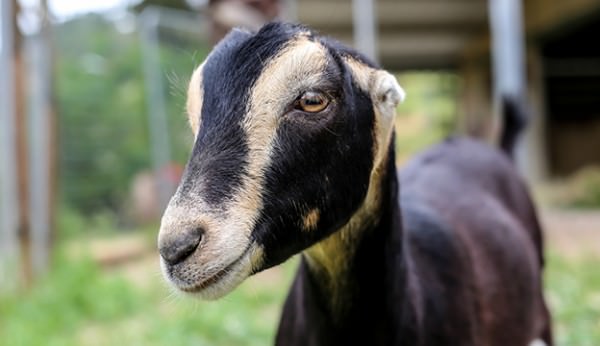
Use: LaManchas produce plenty of butterfat-rich milk for concocting cheese, yogurt, ice cream, and soap. They make fine, friendly, unusual-looking pets, show animals and brush-mowers. Their calm, people-loving disposition makes them useful for packing.
History: The only dairy goat breed to be developed in America, the distinctive LaMancha probably arose from the short-eared goats that accompanied early Spanish missionaries to California. According to the American LaMancha Club’s website, the name “LaMancha” may have been pinned on this breed when a crate of these unusual goats arrived at the Paris World’s Fair for exhibition in 1904. The crate bore the inscription, “LaMancha, Cordoba, Spain.” Further breed modifications took place during the 1920s and 1930s, by breeders such as Eula Frey and Phoebe Wilhelm, through crossings with other dairy breeds to increase the LaMancha’s milk yield and dairy character. This breed made the dairy goat registry in 1958.
Conformation: Like the Nubian, the most eye-catching characteristic of the LaMancha breed is its ears. Only in the LaMancha’s case, at first glance these appendages seem to be missing (of course, only the outer part of the ear is affected; these goats can still hear fine). Two types of ear occur: the “gopher ear”, with a maximum length of one inch, but that preferably has little or no cartilage; and the “elf ear,” which has a two inch maximum length. Both ear types should turn up or down at the end. As with the Nubian, the LaMancha’s short, glossy coat can come in any color or color pattern – great fun for breeders. Their faces have a straight or slightly dished profile. Enthusiasts describe this medium-sized breed as curious, quiet, super-sweet, and easy to keep. Bucks stand about 30 inches or more at the withers and weigh 165 pounds and up; does 28 inches and 130 pounds or more.
Special Considerations/Notes: The hardy LaMancha does well in a variety of climates. Those strange curled ears can trap dirt and moisture, so make sure you check them every so often and carefully clean them if needed. Like all goats, LaManchas are curious, smart, and agile and so require sturdy fences and goat-proof gate latches to prevent escapes. The does of this breed are said to be one of the easiest to milk for two years without re-breeding.



